
A few days ago in the course of my search on After watching a movie, the mysterious town of los agotes reappeared. . From that moment I started looking for information about them, I knew from previous readings their marginalization, but the question is obvious, why?
The exhausted
When talking about exhausts, it is even difficult to define them; Race? Ethnicity? Tribe? None of these usual words when describing a group of people seems to be of any use to us. Rather we can say just that; group of people to which they were united by their status as persecuted, repudiated and stigmatized.
The oldest sources on agotes tell us about the religiosity of these people, although we must not forget that in the 16th or 17th centuries Christianity seemed to be a monotheme. Hence, we know how they were treated when entering the church, which, for example, they entered through a different door. They were also not allowed to take communion with the rest, the priest approached them in the corner they occupied, and of course they had their own baptismal font away from the rest.
Outside the church, we know that they were separated to the neighborhoods furthest from the center of the population. When mixing with the rest of the citizens, they are forced to show their badge of exhaustion, a goose or duck leg made of a red cloth, and obviously in the most visible place. Obviously they were not allowed personal relationships with the rest of the citizens, and a strict inbreeding was imposed on them.

Exhausted with the sign of the goose foot
Agotes distribution areas.
The geographical area where these people were located ranges from the north of Navarra, to some areas of the Basque Country, or Jacetania. To these should be added some areas on the other side of the Pyrenees, such as the French Basque Country, or the Bearne region, according to some sources their number in these areas was even more important than in Spain, but they also got rid of these persecutions before . At least on paper, since there is no trace of these in the 19th century. There is evidence of the burning of writings with the repressive laws towards the agotes, during the years that the French Revolution lasted; freedom, equality and fraternity did not seem to agree too much with the attitude of the citizens towards the “cagots ”, as they were known in the neighboring country.
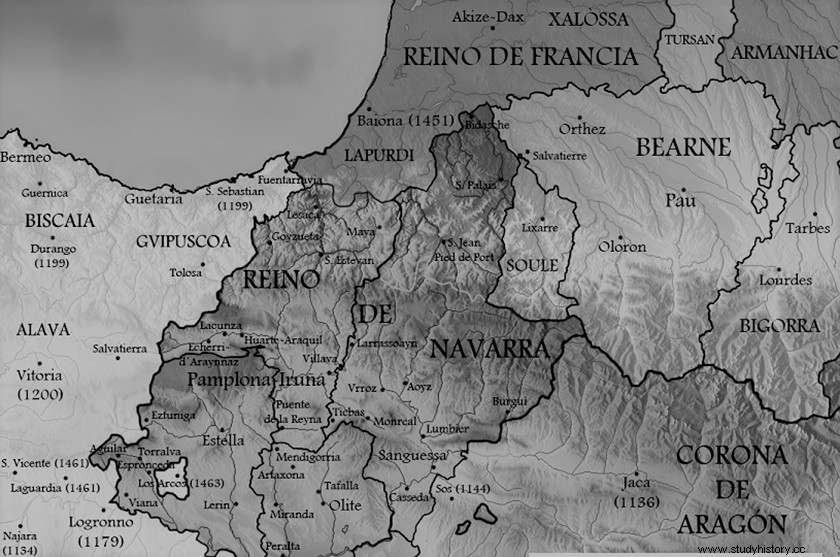
map of the area where agotes existed, at the beginning of the 16th century
But if we have to narrow down the space, as most scholars have done on the subject, we should focus on the small Navarrese valley of Baztán. And now, without daring to point out the last corner where these marginalized people were concentrated, we arrived at the Bozate neighborhood, in the town of Arizkun, a place where in the middle of the 20th century the presence of agotes was still being pointed out.
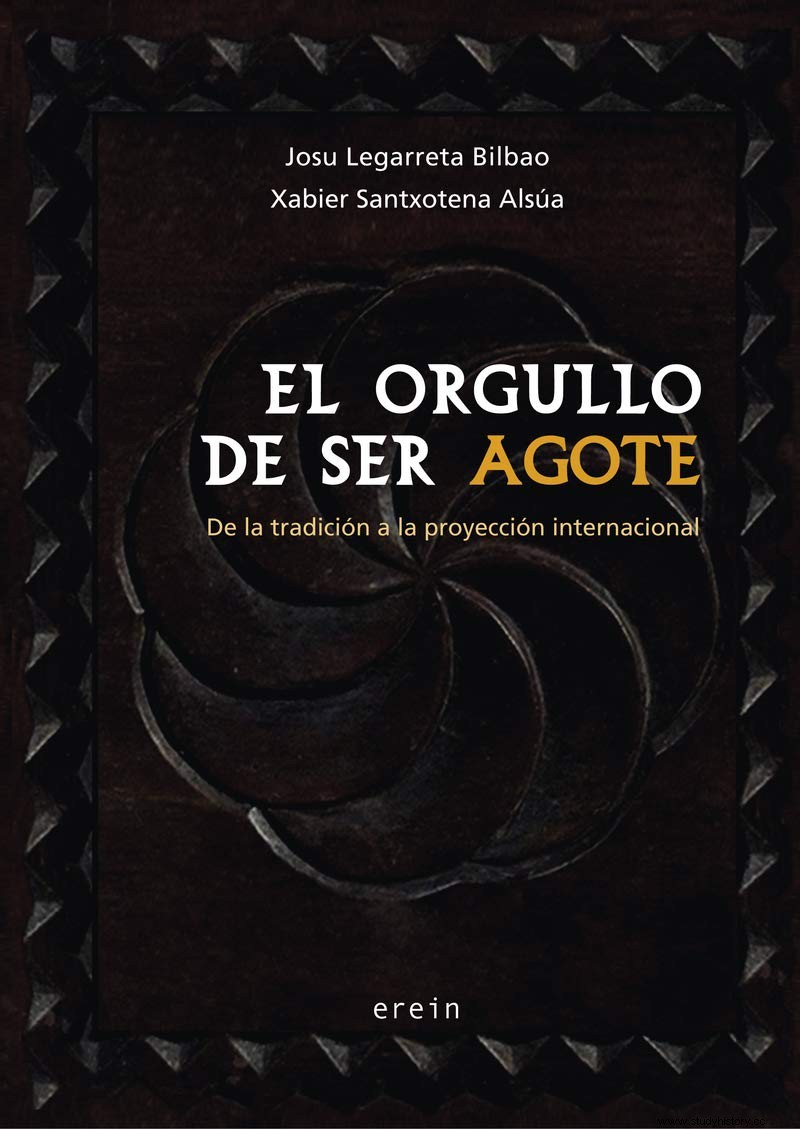
I invite you to know one of the latest books, which talk about the world of agotes. If you buy it through the following link you will be collaborating with our blog
Brief history of the town of Los Agotes.
In the absence of any reliable evidence on the origin of the agotes, we must think that already in the fifteenth century, and even earlier, these people could have been marginalized. A document from 1460 reveals how the inhabitants of Bearne, at that time under the protection of Prince Gastón de Navarra, asked him to prohibit the “cagots ” walk barefoot down the street to avoid infection to the rest of the population. The request was denied by the authorities, a sign that the persecution was unjustified.
How many years would have passed since you felt marginalized, to address the Pope of Rome Leo X, with the request for equal treatment within the church? It is a question that we must assess in its proper measure, since surely several generations had passed. The Papal response, thanks to the intervention of the archdeacon of Pamplona, came six years after it was exposed, in 1513. The Papal Bull said that the agotes should have the same treatment as the rest of the faithful inside the churches. Something that was endorsed by the Cortes of Navarra and by the Emperor Carlos V himself. In vain, since in 1534 the situation was the same, at least in the Baztán valley, where a letter signed by Francisco de los Cobos, secretary of Carlos V, arrived. , prohibiting the humiliating treatment under a fine of one thousand guilders. It was again in vain, the citizens of the valley again denied the agotes the right to neighborhood.
The decrees in defense of agotes continued to arrive, at least there is evidence of one in 1548 and another during the reign of Felipe II in 1582, like the previous ones with the same result. In the 17th century, there were multiple trials to which the inhabitants of the valley were subjected, for continuing to discriminate against the agotes, who not only continued to be marginalized, but also had their fish stolen or their fruit trees burned.
Outside the Baztan there are also documents of this cruel persecution. An example is found in 1696, with the request that D. Miguel de Mendizábal sent to the General Assembly of Tolosa. In it he demanded the expulsion of the agotes of this Gipuzkoan population. The junta agreed to this request stating that the agotes had two months to leave the province in question. They refused and two years later the expulsion was ratified, this time from the capital of the province, San Sebastián.
The eighteenth century followed the same path. Lawsuits against the inhabitants of Navarra, resources from the exhaustions and embargoes and prisons for those unable to pay their own resources as they are subjected to continuous theft. That is to say, an endless history of marginalization and even if we repeat ourselves for no apparent reason. We will have to wait for the 19th century, so that the exhausted begin to glimpse a tunnel exit. The Provincial Council of Navarra prohibits, not only marginalization, but even that any citizen is branded as exhausted. The text is not wasted:
“Those and other conjectures and vulgar traditions have been the cause that until now they have been treated with notorious contempt, considering them vile and excluding them from all public offices and even it can be said that of social and civil treatment”
He then alleges that they are Catholic and Navarrese and therefore begs to be granted by law:
“Let no one be called exhausted, under penalty of injuror he who digests such and those so called so far, being located in the towns or their neighborhoods or suburbs , be respected like the other neighbors or inhabitants for all purposes and trades, according to the class to which they should correspond”
Since then, the only place where news about the marginalization of the agotes has emerged is the so-called neighborhood of Bozate. The reasons remain unknown. As Javier García-Egocheaga Vergara says author of one of the latest studies on agotes, after passing through the neighborhood.
“I won't think of asking Bozate about the agotes again. Some denied having heard that word, others reacted as if I were asking about Dracula in Transylvania, and the more polite, that these were legends and they quickly made me change the conversation.”
The origin of the people of the agotes.
If we attended a meeting of scholars of the world of agotes, without hesitation this would be the star theme of it. In my humble opinion, it seems that an explanation is being sought for an aspect that simply does not have one. The reasons why the first exhaustion was humiliated and despised may be far removed from its origin, and possibly have more to do with some kind of malformation or illness than the place of origin of this individual, or not...
The first origin assigned to the agotes was the goth . That is to say, a thousand years after they subdued the peoples settled in Aquitaine, they come to light again as a marginalized people, a version that is difficult to understand. It is true that the agotes have their origin in the Middle Ages, despite not appearing in the sources until the fifteenth century, but from there to small groups resurfacing socially after several centuries of darkness in the sources, it seems very far-fetched. I was left with a possible explanation; that the word exhaustion arose as an insult to these people:"ca-got" in French (goth-dog), this does seem more feasible.
Another of the origins assigned between the 18th and 19th centuries was the Gypsy . In this case, yes, there is a very important temporal coincidence, since both of them are located in the Iberian Peninsula around the fifteenth century, and in the case of the gypsies their presence is manifested in the time of the Catholic Monarchs. But seen in perspective, how little the gypsies and the agotes have to do with each other as a society. the former defended their traditions, and even their Romani language, "cloak and dagger", the latter lived in complete submission.

Gypsy girls, an image that differentiates them well from the agotes.
The Cathar origin of the agotes, it is temporally and even geographically the most plausible. The Cathars took root in French Occitania between the 11th and 13th centuries, counting on the favor of Aragonese nobles and kings. In the middle of that century they practically disappeared when they were victims of the persecutions of the papal crusades. But even in the fourteenth century, they continue to appear in some inquisitorial records, until they completely disappeared, it is said that they were hidden in the Pyrenean mountains and forests. A century later, the agotes are present in the same geographical space, but in the western part of the Pyrenees. One of the main defenders of this theory is Xabier Santxotena Alsua , sculptor and poet descendant of agotes and born in the very neighborhood of Bozate, according to him something very important united Cathars and agotes, his ability to work wood.
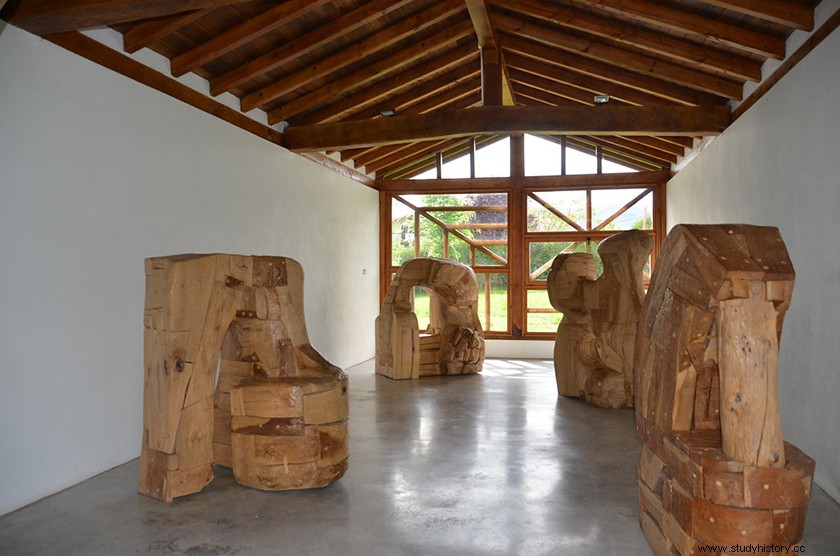
Xavier Santxotena House Museum
The one who werelepers It is a theory defended by some scholars on the subject, such as Florencio Idoate . That is, they were not excluded and separated from society because of their origin, but because of an illness. That curiously has accompanied human beings for more than 4,000 years of history, without distinguishing origin, race, ethnicity or economic capacity. Of course, it has served so that the victims of this disease have been systematically removed from society, like our protagonists today. If the first agote was removed by this disease, the question is obvious; Did all his descendants inherit the disease? Apparently it is not hereditary.
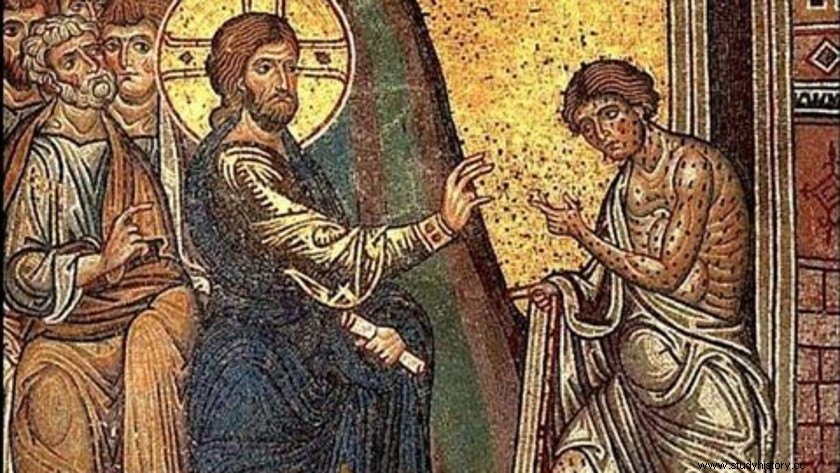
Jesus Christ with a leper
Let's not think too much about it, this is the description of agotes made by a 16th century French doctor:
“Although these affections seem more like impurities of the skin than diseases that do not settle in the totality, but in certain parts of the body of those and of the men vulgarly called cagots and white lepers who present a general exultation. In fact, its true illness is not elephantiasis itself, which has been defined as a pig of the whole body and which comes only from atrabilis —black bile followed by the inflammation of all the humors—, it is not what the Greeks called leprosy and that it is not a skin condition, nor the black spot of vitiligo. Its origin is in the pituitary gland; everything indicates it:whiteness of snow, absence of any itching anesthesia? equal and united body surface and swelling of the face. The only thing that suggests that they are not in perfect health is their bad breath which comes from how easily their pituitary becomes corrupted. This condition is not contagious like leprosy; It is not acquired through sexual intercourse, it is hereditary and is transmitted to children. It is for this reason that they are forbidden to marry outside their caste for fear that it is wrong, that it is maintained with an invincible persistence in a certain population, it spreads further.”

Laurent Joubert, the doctor in question
After this it is easier to forget that the agotes were persecuted by lepers, in addition to being like that, the normal thing is that they would have ended up in the various hospitals and auspices that treated this disease in 16th century Spain.
As a conclusion.
It is evident after these lines that the answers to why agotes were marginalized follow the answer. The only thing that can be found about them is in the large number of publications that have been published for many years talking about them. But they all agree on the same thing, there are only unconnected data of decree laws, lawsuits, or resources where the agotes intervened. Writings of contemporaries, such as doctors, writers or officials of the time, but nothing in the handwriting of an exhausted person. In the north of Navarra it continues to be a controversial subject, while some write books about the pride of being exhausted, others turn away when they hear about them. Finally, it should be noted that it is not necessary to look for the architectural remains of the agotes, the doors of the churches have been bricked up, the fountains where they only drank no longer exist and the neighborhoods where they lived now are beautiful villages in the north of Navarra.
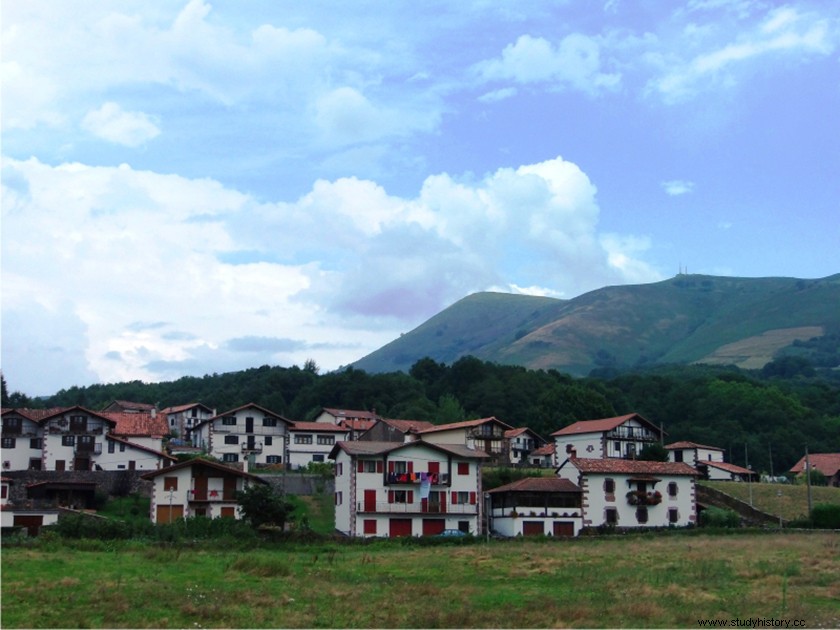
Bozate today
Be sure to visit the website of the only museum dedicated to the world of agotes:valledebaztan.com
More info:
Cursed minorities, the unknown history of other peoples of Spain, Javier García-Egocheaga Vergara, Ed Tikal, 2003.
Seroanthropology and history of agotes, Pilar Hors.
Agotes in the Roncal and Baztán valleys, Florencio Idoate Iragui
